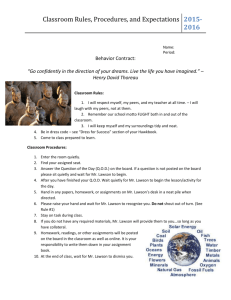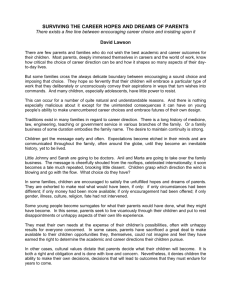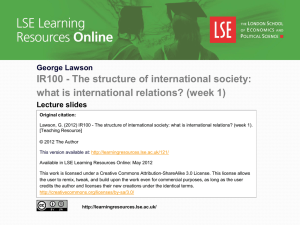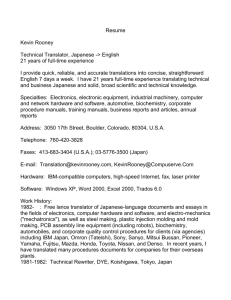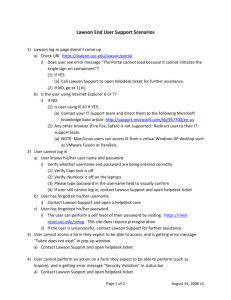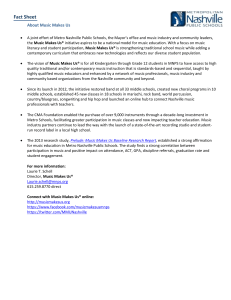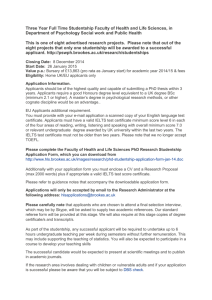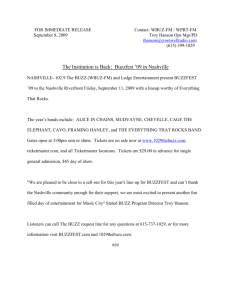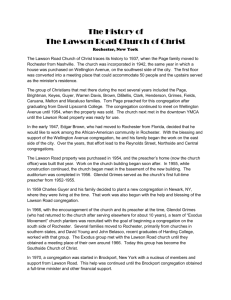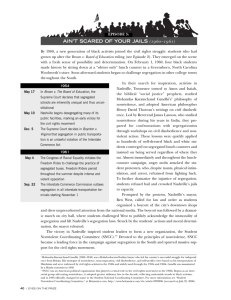Handout Relating to the Nashville Sit-ins
advertisement
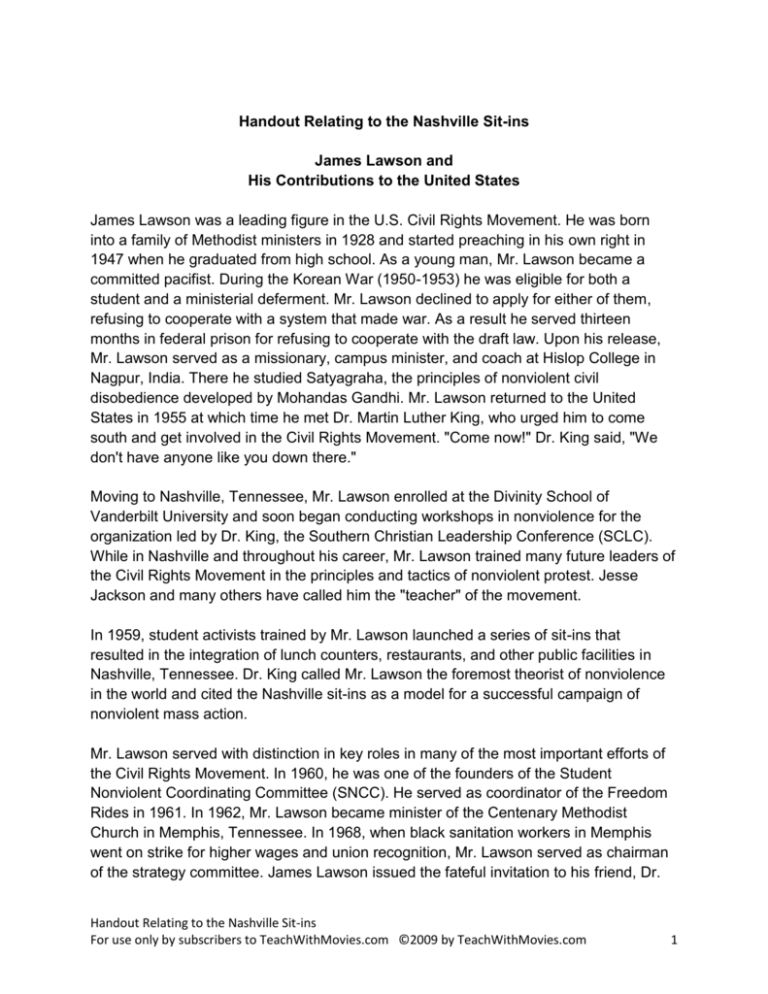
Handout Relating to the Nashville Sit-ins James Lawson and His Contributions to the United States James Lawson was a leading figure in the U.S. Civil Rights Movement. He was born into a family of Methodist ministers in 1928 and started preaching in his own right in 1947 when he graduated from high school. As a young man, Mr. Lawson became a committed pacifist. During the Korean War (1950-1953) he was eligible for both a student and a ministerial deferment. Mr. Lawson declined to apply for either of them, refusing to cooperate with a system that made war. As a result he served thirteen months in federal prison for refusing to cooperate with the draft law. Upon his release, Mr. Lawson served as a missionary, campus minister, and coach at Hislop College in Nagpur, India. There he studied Satyagraha, the principles of nonviolent civil disobedience developed by Mohandas Gandhi. Mr. Lawson returned to the United States in 1955 at which time he met Dr. Martin Luther King, who urged him to come south and get involved in the Civil Rights Movement. "Come now!" Dr. King said, "We don't have anyone like you down there." Moving to Nashville, Tennessee, Mr. Lawson enrolled at the Divinity School of Vanderbilt University and soon began conducting workshops in nonviolence for the organization led by Dr. King, the Southern Christian Leadership Conference (SCLC). While in Nashville and throughout his career, Mr. Lawson trained many future leaders of the Civil Rights Movement in the principles and tactics of nonviolent protest. Jesse Jackson and many others have called him the "teacher" of the movement. In 1959, student activists trained by Mr. Lawson launched a series of sit-ins that resulted in the integration of lunch counters, restaurants, and other public facilities in Nashville, Tennessee. Dr. King called Mr. Lawson the foremost theorist of nonviolence in the world and cited the Nashville sit-ins as a model for a successful campaign of nonviolent mass action. Mr. Lawson served with distinction in key roles in many of the most important efforts of the Civil Rights Movement. In 1960, he was one of the founders of the Student Nonviolent Coordinating Committee (SNCC). He served as coordinator of the Freedom Rides in 1961. In 1962, Mr. Lawson became minister of the Centenary Methodist Church in Memphis, Tennessee. In 1968, when black sanitation workers in Memphis went on strike for higher wages and union recognition, Mr. Lawson served as chairman of the strategy committee. James Lawson issued the fateful invitation to his friend, Dr. Handout Relating to the Nashville Sit-ins For use only by subscribers to TeachWithMovies.com ©2009 by TeachWithMovies.com 1 King, requesting his presence in Memphis to support the garbage workers' strike. Dr. King was assassinated while he was in Memphis. Mr. Lawson moved to Los Angeles in 1974 to become pastor of the Holman United Methodist church. He is now retired but continues to be active in political and social causes. People in authority have often been unhappy with James Lawson's activities. In addition to incurring the ire of the federal government for resisting the draft, he was expelled from Vanderbilt University for his Civil Rights work. He has been jailed in nonviolent civil disobedience activities in Ohio, West Virginia, Kentucky, Tennessee, Mississippi, California and Washington, D.C. He has objected to U.S. military involvement abroad, particularly to the Cold War, the Vietnam War, and the wars in Iraq. He has opposed U.S. policy toward Cuba and U.S. policy in Central America. He has supported the rights of Palestinians, the demands of workers for increased wages and union representation, and the requests of gays and lesbians for equal treatment. The Audiences Which the Demonstrators Were Trying to Reach The sit-ins, the marches, and the boycott were designed to address many audiences. The following describes seven of these audiences and the reasons they were targeted by the protesters. (1) the segregationists, because nonviolent mass action always seeks to change the minds of the opponents; (2) the public officials of Nashville, because they held the power of arrest and controlled the government; (3) the Nashville business community, because these people had a lot of influence with the public officials; this group was particularly vulnerable to the sit-ins because the controversy disrupted business; (4) the people of Nashville, because nonviolent mass action always appeals to the sense of justice of the community which can pressure those in power to change the policy, especially in a democracy; (5) the citizens of the nation, for the same reasons as the people of Nashville; Handout Relating to the Nashville Sit-ins For use only by subscribers to TeachWithMovies.com ©2009 by TeachWithMovies.com 2 the sit-ins were a major factor in getting Congress to pass a public accommodations law that prohibited racial segregation in restaurants, including lunch counters; (6) politicians outside of Memphis, particularly at the national level, for the purpose of convincing them to pass laws banning discrimination; and (7) the people of the world, because Americans and U.S. public officials would be embarrassed by the failure of the U.S. to live up to the principles of the Declaration of Independence. Handout Relating to the Nashville Sit-ins For use only by subscribers to TeachWithMovies.com ©2009 by TeachWithMovies.com 3
